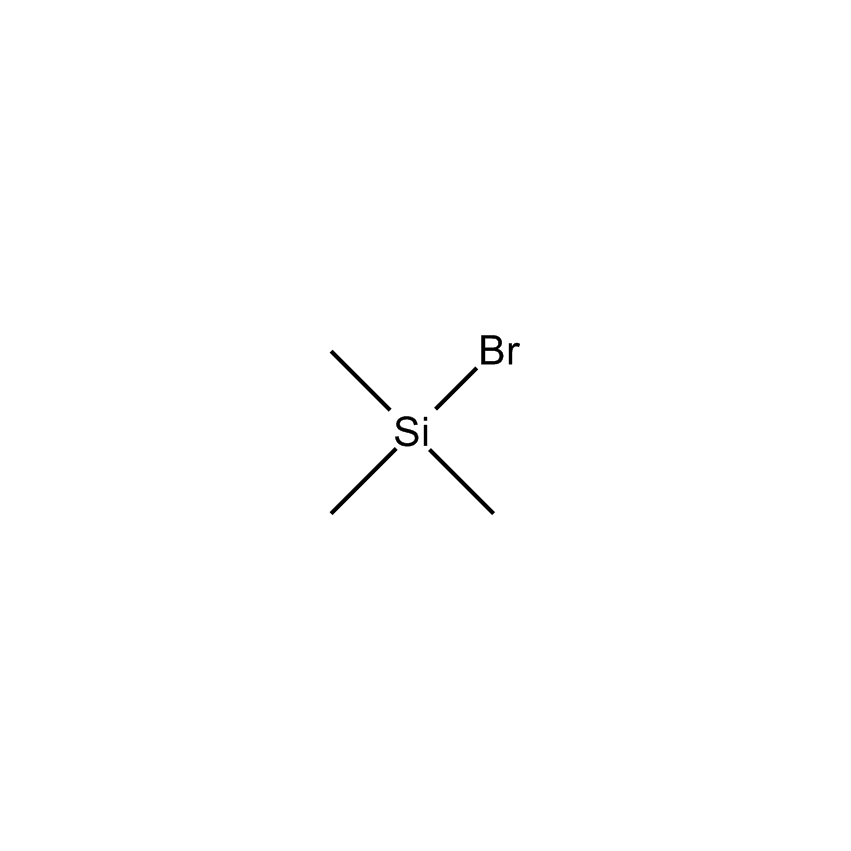Additional Properties
- Einecs Number 220-672-0
- Synonyms BROMOTRIMETHYLSILANE
- HMIS 3-4-2-X
- Molecular Formula C3H9BrSi
- Molecular Weight (g/mol) 153.09
- Purity (%) 97%
- TSCA Yes
- Delta H Vaporization (kJ/mol) 30.8 kj/mole
- Boiling Point (˚C/mmHg) 80
- Density (g/mL) 1.1725
- Flash Point (˚C) -3 °C
- Melting Point (˚C) -44°
- Refractive Index @ 20˚C 1.422
Application
Review of synthetic utility.1
Converts acid chlorides to acid bromides.2
Deesterifies phosphorus esters.3
Converts nitroalkanes to nitroalkenes.4
Catalyzes the cross-coupling of heteroaromatics.5
Used in the synthesis of unsymmetrical phosphine oxides.6
Fieser
F&F: Vol. 9, p 73; Vol. 10, p 59; Vol. 11, p 59; Vol. 12, p 799; Vol. 15, p 51; Vol. 16, p 50; Vol. 18, p 380; Vol. 19, p 373; Vol. 20, p 404.
Reference
1. Handbook of Reagents for Organic Synthesis, Reagents for Silicon-Mediated Organic Synthesis, Fuchs, P. L. Ed., John Wiley and Sons, Ltd., 2011, p. 92-100.
2. Schmidt, A. H. et al. Synthesis 1981, 216.
3. Chovinard, P. M.; Bartlett, P. A. J. Org. Chem. 1986, 51, 75.
4. Kunetsky, R. A. et al. Tetrahedron Lett. 2005, 46, 5203.
5. Kita, Y. et al. J. Am. Chem. Soc. 2009, 131, 1668.
6. Fougére, C. et al. Eur. J. Org. Chem. 2009, 6048.
Safety
Trimethylsilyl Blocking Agent
Used as a protecting group for reactive hydrogens in alcohols, amines, thiols, and carboxylic acids. Organosilanes are hydrogen-like, can be introduced in high yield, and can be removed under selective conditions. They are stable over a wide range of reaction conditions and can be removed in the presence of other functional groups, including other protecting groups. The tolerance of silylated alcohols to chemical transformations summary is presented in Table 1 of the Silicon-Based Blocking Agents brochure.
Trimethylbromosilane; Bromotrimethylsilane; Trimethylsilyl bromide; TMBS

